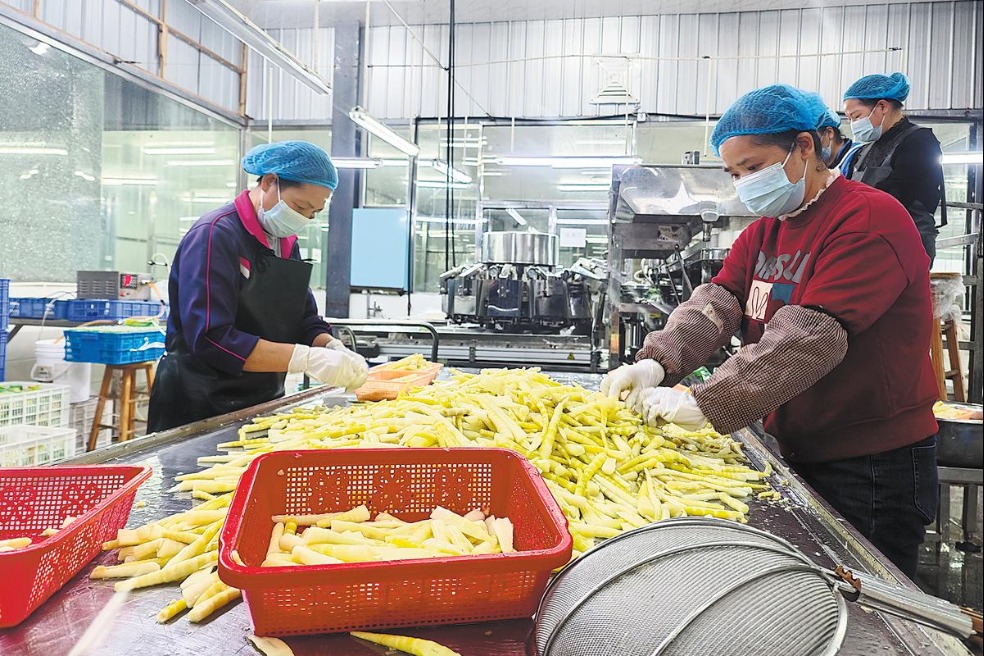Building images of the past
Photographer captures the charm of places that evoke another era, Wang Qian reports.

Every city has them. They are far from the well-lit boulevards where shoppers mingle. They are the dark corners of yesteryear where the dreams have gone, but the memories linger. In these secret corners, there are abandoned places that have witnessed society evolve. Sites, once occupied by humans, now at nature's mercy as weeds reclaim the territory.
To some, they are just ruins, but for photographer Zhao Qing, instead of decay, she sees beauty in the crumbling walls and rusting metal, feeling a connection to a bygone age. Urbex, short for "urban exploration", means to explore and document abandoned man-made structures, such as cinemas, factories, hospitals and even prisons. It has gained popularity among the young, especially during the COVID-19 pandemic which restricted people's movement.
Since 2018, Zhao has explored more than 150 abandoned buildings across the country to capture the forgotten past they stand testament to before they disappear forever. Her photos have a post-apocalyptic quality.
"Every derelict building has a story, which is worth recording, because it is the closest way to get into the past," Zhao says.
And due to fast urbanization, she adds, it is a race against time to document the last moments of these buildings before they get demolished.
Based in Guangzhou, Guangdong province, the 27-year-old photographer is one of a small group of intrepid urban explorers who try to unlock the stories behind the sites. This pastime is not restricted to just China. Urban exploration is popular around the world.
"China has experienced astonishing growth in recent decades, which has led to dramatic changes in urban areas," Zhao explains.
While recording these changes with her photos, she has noticed that many factories, theaters, schools and neighborhoods that were home to vibrant communities are now in danger of vanishing.
She prefers to zoom in on deserted pieces of architecture that were built between the 1940s and the '80s, because in her eyes, 1978 was a historic turning point for China when the reform and opening-up policy was launched.
With her commentary about the nature of the spaces, their surroundings and her feelings while exploring them, her photos and videos are published online at the micro-blogging platform Sina Weibo and the fashion and lifestyle platform, Xiaohongshu, where she has attracted 20,000 followers. For some, her photos have a nostalgic atmosphere, evoking a bygone era when life was slow.
Chen Jingwen, a renowned freelance photographer based in Guangzhou, says that behind every abandoned building, there is not only history, but also a story frozen in time.
Behind the scenes
Zhao has been interested in photography since college, where she majored in accounting. After graduation from Shaoguan University in Shaoguan, Guangdong, in 2017, she worked for a real estate developer in Guangzhou, but quit the job several months ago.
"Keeping an eye on buildings and urban development plans was a part of my job," Zhao says. "In recent years, as the urbanization in Guangzhou has accelerated, it is difficult for people, like me, to keep up, and abandoned buildings offer me an escape from the fast-paced life."
She still remembers the thrill when she entered her first wasteland-a dilapidated bicycle factory on the bank of the Pearl River in 2018. It was once one of the five main bike manufacturers in China.
Despite being with two friends, she could feel her heart racing while climbing the wall into the factory, which was built in 1960. Even though there were no machines inside, in Zhao's imagination, the factory was buzzing with activity.
"Entering the building, it seemed that time had stood still. Standing in the factory, I was immersed into the environment, imagining how busy the workers used to be," Zhao says.
The factory ignited her fascination with urbex photography.
While touring a disused movie theater, Zhao encountered a billboard advertising several movies that she had never heard of. One of them was Queen of Heart at Gunpoint released in 1986.
"Standing in front of the billboard, I was taken back to the 1980s and imagined that I was a moviegoer, thinking about which movie I'd want to see next time," Zhao says and smiles.
One of her most popular series of images is about a hunyu (marriage and childbirth) school in Northwest China. Such schools were established across the country around the 1980s when the national policy of family planning which limited couples to just one child had been implemented to curb the rapid population growth. The schools helped educate and provide child-rearing information to newlyweds.
"On its white-and-green wall, there is illustrated information about sex education, birth control, healthcare during pregnancy, as well as good parenting, which, even today, are not out of date," Zhao says.
A Xiaohongshu user named Sanwenyu Fanfan agrees that such schools should also be promoted today to teach people how to become qualified parents.
Zhao says that although such schools or institutions have disappeared, their existence bears witness to changes in the country's family planning policy that was in effect for decades.
That policy has gradually eased due to current social circumstances and widespread concerns over the country's low birthrate and aging society. Earlier this year, the National People's Congress, China's top legislature, responded by amending the law to encourage couples of childbearing ages to have three children.
Potential risks
Many people have asked Zhao about the locations in her photos, but she refuses to share the information. This, apparently, is a golden rule for urbex photographers. "Once you share the address, you never know who will visit the place and why they will go there," Zhao explains.
One example that illustrates the reticence to share a location's coordinates is a place in downtown Guangzhou, which is home to dozens of abandoned airplanes. It was a hidden place until someone shared the location on the internet. Many people, especially social media celebrities, went there to take pictures, leaving a sea of litter in their wake.
"The security guard is a man in his 70s, who has to patrol the place every day since more people have broken into it to take photos," Zhao says.
For urbex photographers, like Zhao, "take nothing but photos, leave nothing but footprints" is their motto.
Another reason Zhao keeps locations secret is that most of the places she visits are dilapidated, which may pose a danger to people who are not well prepared.
Zhao once had scrapes and bruises after falling through a rotted wooden stage while exploring an abandoned theater.
"For safety concerns, I seldom go to these places alone and never go at night," she says, adding that she always asks for permission before entering these buildings.
To identify potentially promising sites, she usually uses satellite maps for clues, because these locations are marked in dark gray.
"I have an ambitious plan to document every derelict structure in China and talk with locals about the stories behind them," Zhao says.






Today's Top News
- China to apply lower import tariff rates to unleash market potential
- China proves to be active and reliable mediator
- Three-party talks help to restore peace
- Huangyan coral reefs healthy, says report
- PLA conducts major drill near Taiwan
- Washington should realize its interference in Taiwan question is a recipe it won't want to eat: China Daily editorial






























